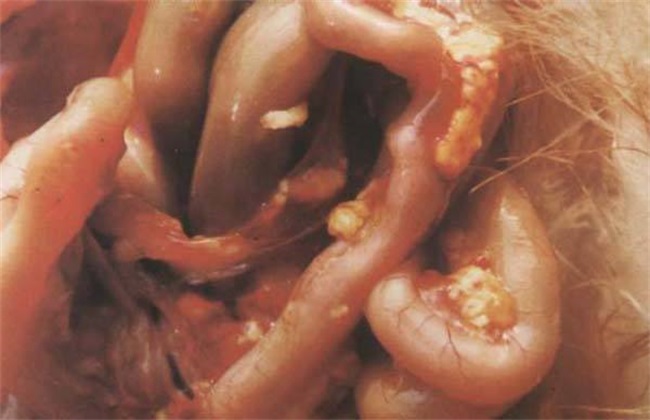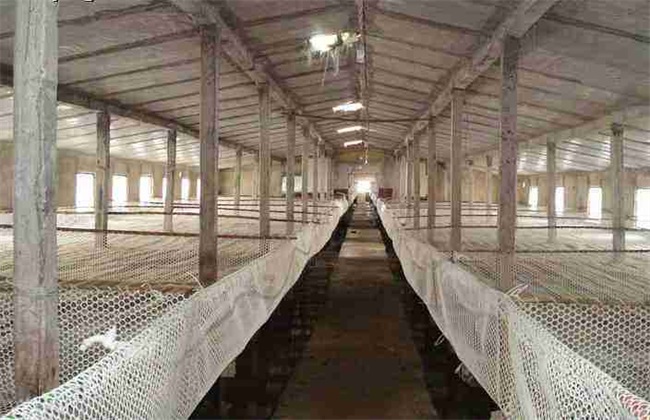Prevention and treatment of necrotizing enteritis in chickens
Chicken necrotizing enteritis, also known as enterotoxemia, is an acute disease of bacterial infection, which occurs quickly and spreads rapidly. after being damaged, the small intestine will necrosis, so it is named necrotizing enteritis. The infected chickens will suffer soon after the bacteria can reproduce rapidly, and may die in severe cases, which is highly harmful. In order to prevent and cure this disease, it is necessary to understand the characteristics of the disease, and then targeted prevention and control.

Symptoms of the disease
The complication is particularly sudden, and sometimes it is not found that the chicken has died suddenly, and there is not too much abnormal performance, so it is more difficult to identify. But there is no sudden death of the chicken can be seen, the chicken began to depressed, do not eat, mainly feces blackened with blood. After dissecting the plane, the stench of cadaveric decay was found to be intestinal congestion, mucosal necrosis and liver necrosis. The long villi of the disease fell off and the fibrous cells proliferated in the diseased part.
II. Disease spread
So far, the disease has only been found to harm chickens and other birds. The disease mainly occurs in broilers and layers. Chicks and developing chickens are the main targets of infection. Diseases occur all the year round. However, the disease is prevalent in the environment of high temperature and humidity. The main causes of the disease are poor ventilation, rising temperature and unclean environment, which provide conditions for the occurrence of bacteria. This may even occur in a large area.
III. Prevention and treatment
1. Medication
It is best to use 0.1% chloramphenicol mixed feed, or choose Jinke Chuang's enterotoxin dominating mixture to feed, which is the best way to control the spread of the disease, and the dosage depends on the disease and the size of the chicken. The continuous feeding of 2.2 ~ 4.49 piriamycin per ton of feed for many months can prevent the disease, increase the feed absorption conversion rate and increase the weight of chickens.
two。 Clear
Keep the henhouse clean, clean each coop once a day, remove feces, then rinse clean and sprinkle with disinfectant powder. Chicken pens with sewers can also be built, so that there is no need to trample on chicken manure to pollute the growing environment, and it is convenient to clean up. Then the activity area outside should also be washed regularly and sterilized by spraying. Chicken troughs and drinking water utensils should be cleaned and sterilized.
3. Feed
Feed should be clean and mildew-free, and then the overnight base material should be poured out and washed before each feeding, and the trough should be cleaned and fed again if there is no leftover material. Green fodder or succulent feed should be washed, cut and fed carefully, and fresh fodder should be fed. Regular supplement of vitamins to enhance disease resistance.
The occurrence of necrotizing enteritis in chickens is relatively sudden, so we should observe the abnormality carefully at ordinary times. If something is wrong, we can check it quickly and stop the loss in time. Good prevention work can reduce the occurrence of many diseases. In addition, the treatment should be particularly timely, the use of drugs with quick effect, so as to avoid death.
Related
- On the eggshell is a badge full of pride. British Poultry Egg Market and Consumer observation
- British study: 72% of Britons are willing to buy native eggs raised by insects
- Guidelines for friendly egg production revised the increase of space in chicken sheds can not be forced to change feathers and lay eggs.
- Risk of delay in customs clearance Australia suspends lobster exports to China
- Pig semen-the Vector of virus Transmission (4)
- Pig semen-the Vector of virus Transmission (3)
- Five common causes of difficult control of classical swine fever in clinic and their countermeasures
- Foot-and-mouth disease is the most effective way to prevent it!
- PED is the number one killer of piglets and has to be guarded against in autumn and winter.
- What is "yellow fat pig"? Have you ever heard the pig collector talk about "yellow fat pig"?



